02:45
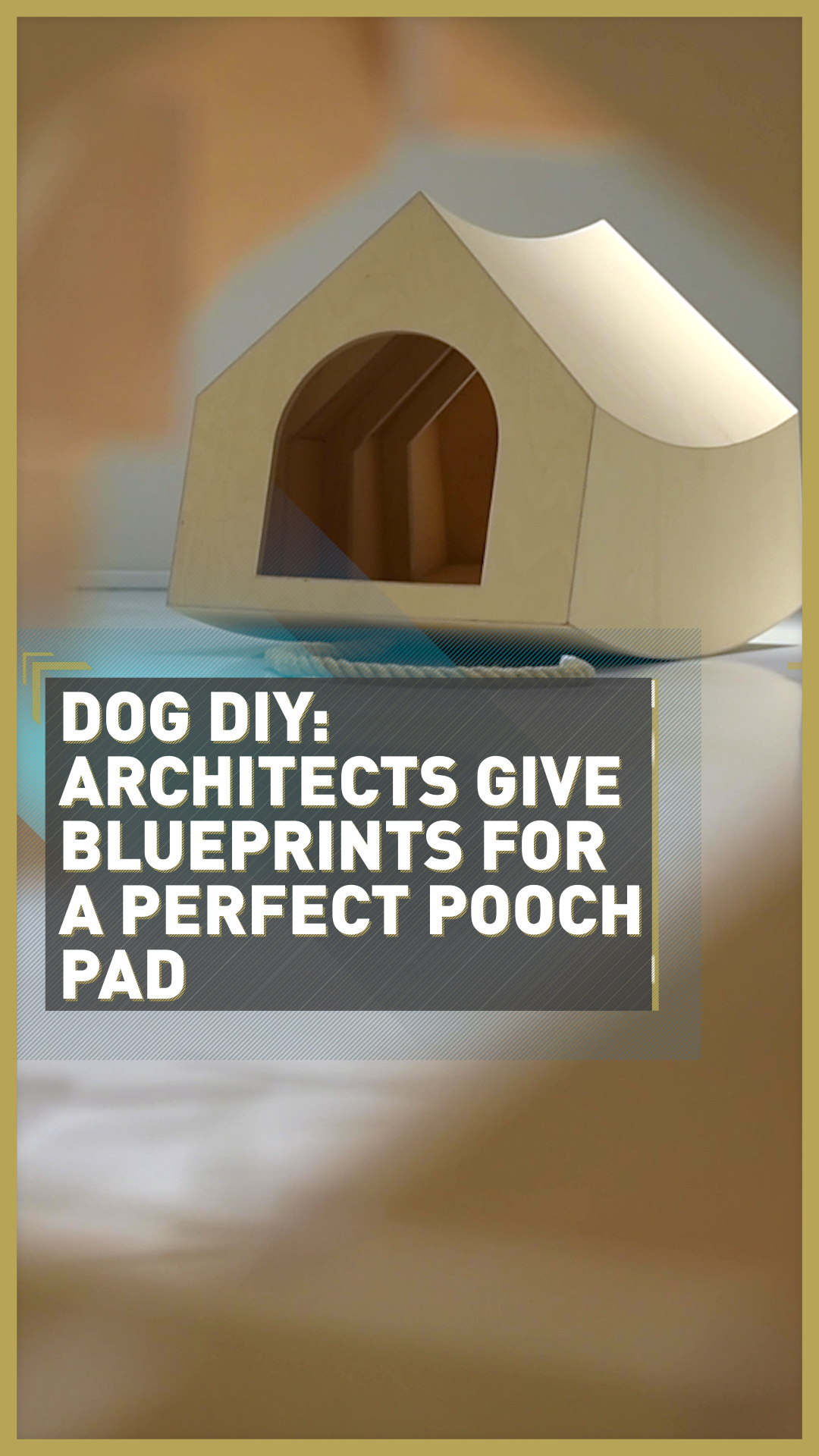
Do you fancy making architecture for your dog?
Look no further.
A new exhibition opening on Saturday at Japan House London shares with you just how to do that – and pet owners have never needed it more than during the COVID-19 pandemic, when they are spending more time than ever before at home with their canine companions.
Architecture for Dogs is a global project invented by architects and designers, which is centered around making dogs and their people happy.
It first launched at Design Miami in 2012 and has since then received global recognition, touring Japan, China and Brazil.
The London exhibitions showcases 16 pieces of innovative and practical construction, including I See You! by London-based architect Asif Khan. The pieces will also go on tour around the UK.
Architecture for Dogs is an open-source network which encourages guests to become makers themselves. Those inspired can download the design blueprints from the internet for self-assembly at home. Budding architects are also encouraged to upload pictures of their finished constructions to the internet, so that people can see the creations all across the world.

The architects involved in this innovative project are all first-rate and world-renowned. /Japan House London
The architects involved in this innovative project are all first-rate and world-renowned. /Japan House London
Hara Kenya, the exhibition director who was inspired by the relationship with his childhood dog, says that he sensed a new possibility for architecture when he saw a small dog standing next to a person and imagined the possibility of dog-scaled architecture.
U.S. company Imprint Lab showed interest in this concept, which led to the creation of free-to-download blueprints. This creates an immersive experience, whereby those who visit the exhibition can recreate what they see and adapt it to their own environment for their dog.
In case you missed it:
• Ground-breaking DNA study busts age-old myths about Vikings
• 'Disaster' in the Danube as the river continues to be polluted
• Rare gems exhibition shines in Paris
It is possible to interpret and create your own architecture with simple materials and fabrics lying around the house. For example, Hara's invention Pointed T simply involves taking one large sheet of paper, cutting a part of it and hanging it from the ceiling to create a territory, which is ideally designed for a Japanese terrier. As stated in the instructions, "You don't need nails or any construction tools; with just stationery anyone can make this house."
Another piece of architecture involves using a T-shirt to build a replica of the Wanmock by Torafu Architects. This piece of indoor furniture, designed to create a feel-good relationship between humans and dogs, is built up of a wooden frame on which the owner's old clothes are stretched, enveloping the dog's body in a hammock style.
With practicality in mind, the T-shirt can be thinner in summer to allow the air through and thicker in the winter so your pooch ca snuggle up during the cold weather.
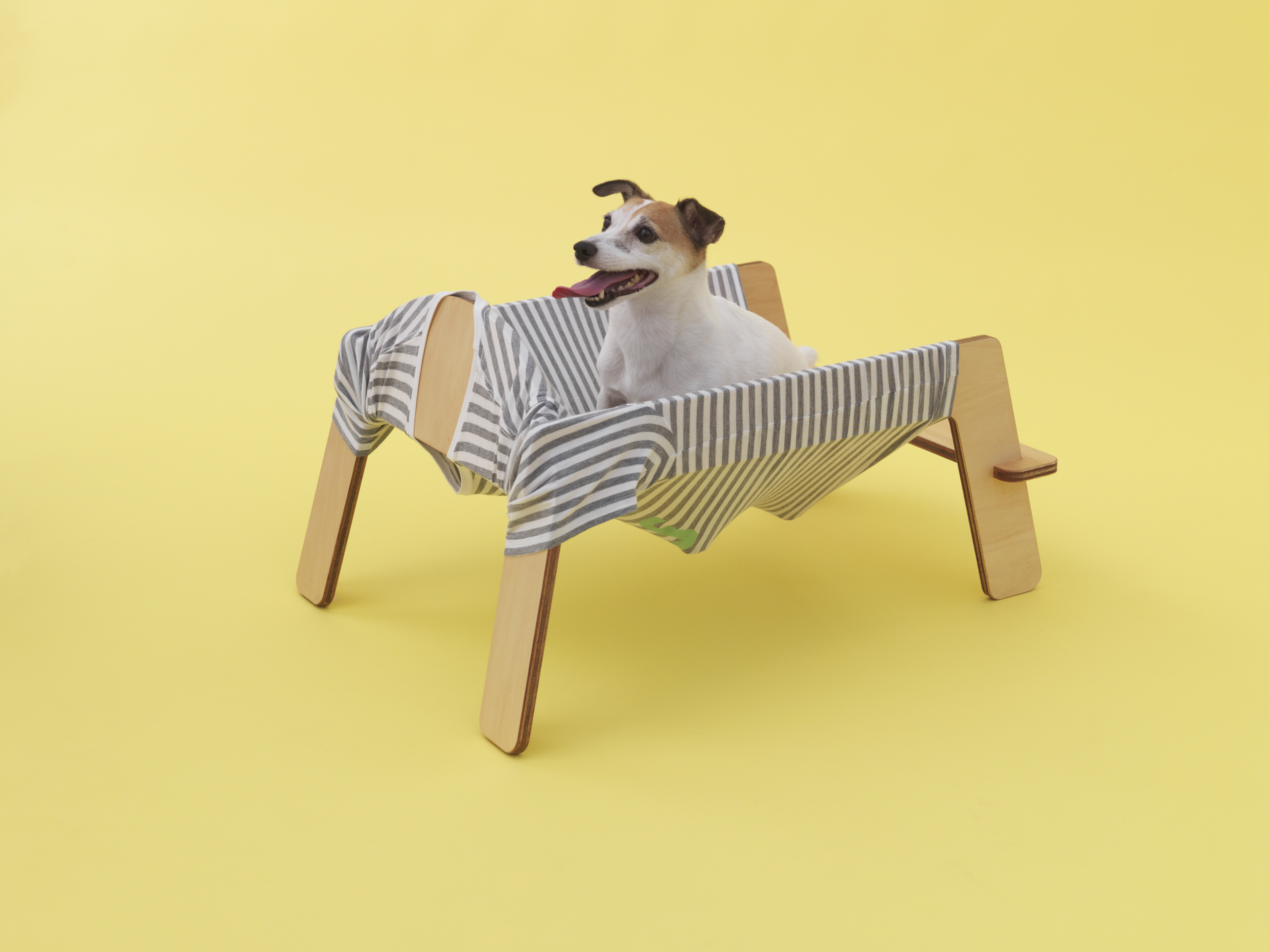
Wanmock by Torafu Architects for Jack Russell terrier. /Japan House London
Wanmock by Torafu Architects for Jack Russell terrier. /Japan House London
Not all the pieces are made with specific breeds in mind. I See You!, created by London-based architect Asif Khan, is designed for any dog with black fur.
He was inspired by the ideas of camouflage when his friend's dog went missing for a short while on a COVID-19 socially-distanced walk.
"I was interested in how a dog perceives space – how do they begin to learn about the environment they're in?" Khan explained to CGTN Europe.
Adding that their sensory perception is often centered on their noses, which are around 1,000 more sensitive than human noses, Khan explained that his piece explored this understanding of space.
"The shape of the piece begins in a horizontal surface and then curves up slowly to a vertical surface and then becomes a tabletop so the dog can lie on the edge.
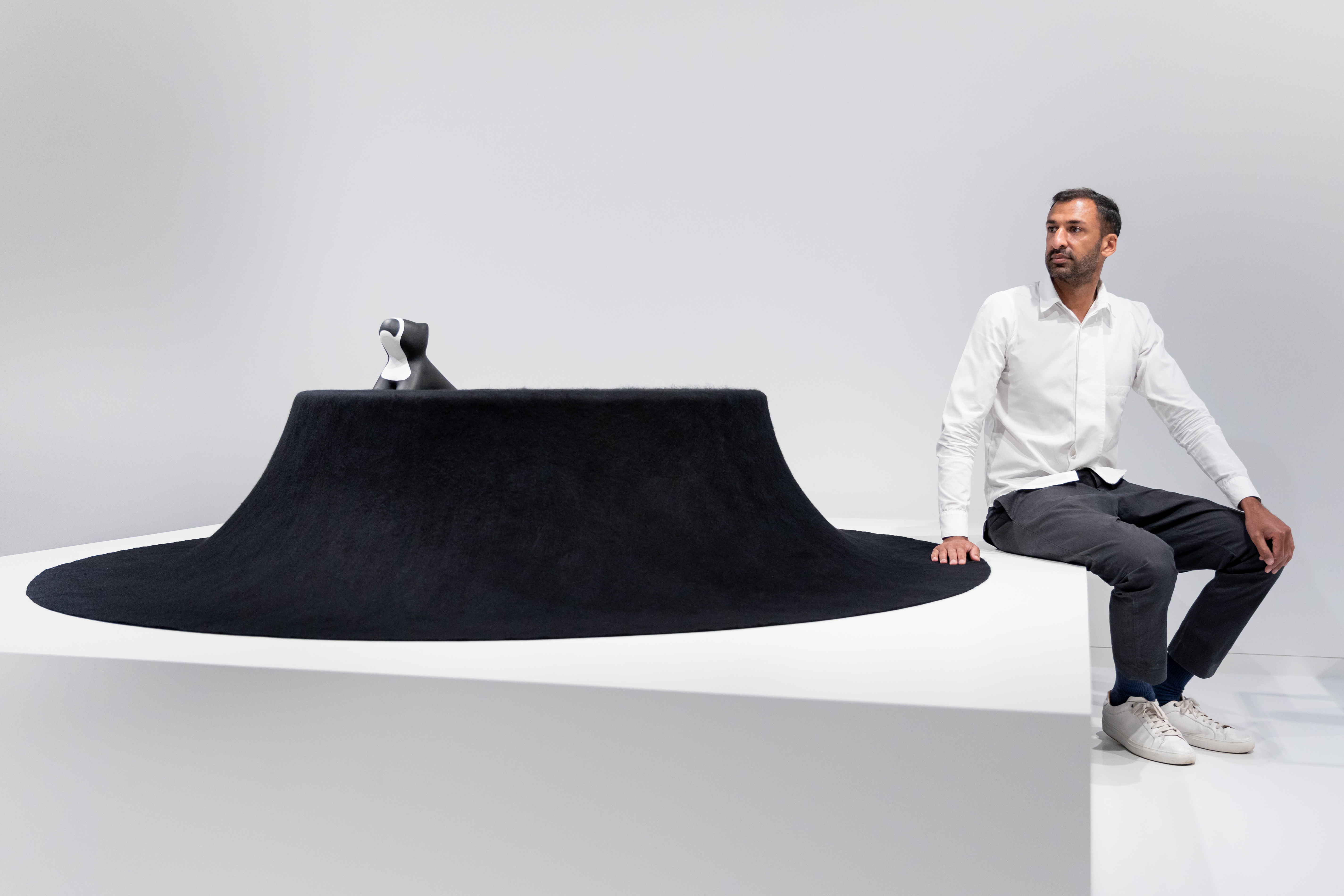
I See You! by Asif Khan, for dogs with black fur. /Japan House London
I See You! by Asif Khan, for dogs with black fur. /Japan House London
"It can kind of enjoy the sort of 'sheepy' smell of wool, which is really cozy and kind of tasty for the dog – but also venture up onto the top and lie in this kind of crater we've created for the dog to nestle into."
Having designed it with the dog at the center of the living room rather than being "banished to the corner or under the table," Khan says the piece is "putting the dog at the center of human life."
Khan was struck with inspiration for his piece during lockdown, and the COVID-19 pandemic influenced not just the decision to bring the exhibition to the UK but also the project's organization.
Architecture for Dogs is Japan House London's first post-lockdown exhibition: director of programming Simon Wright cited the desire for "something a little bit more playful" and "a little bit more lighthearted, yet with a sense of sincerity and affection for the subject."
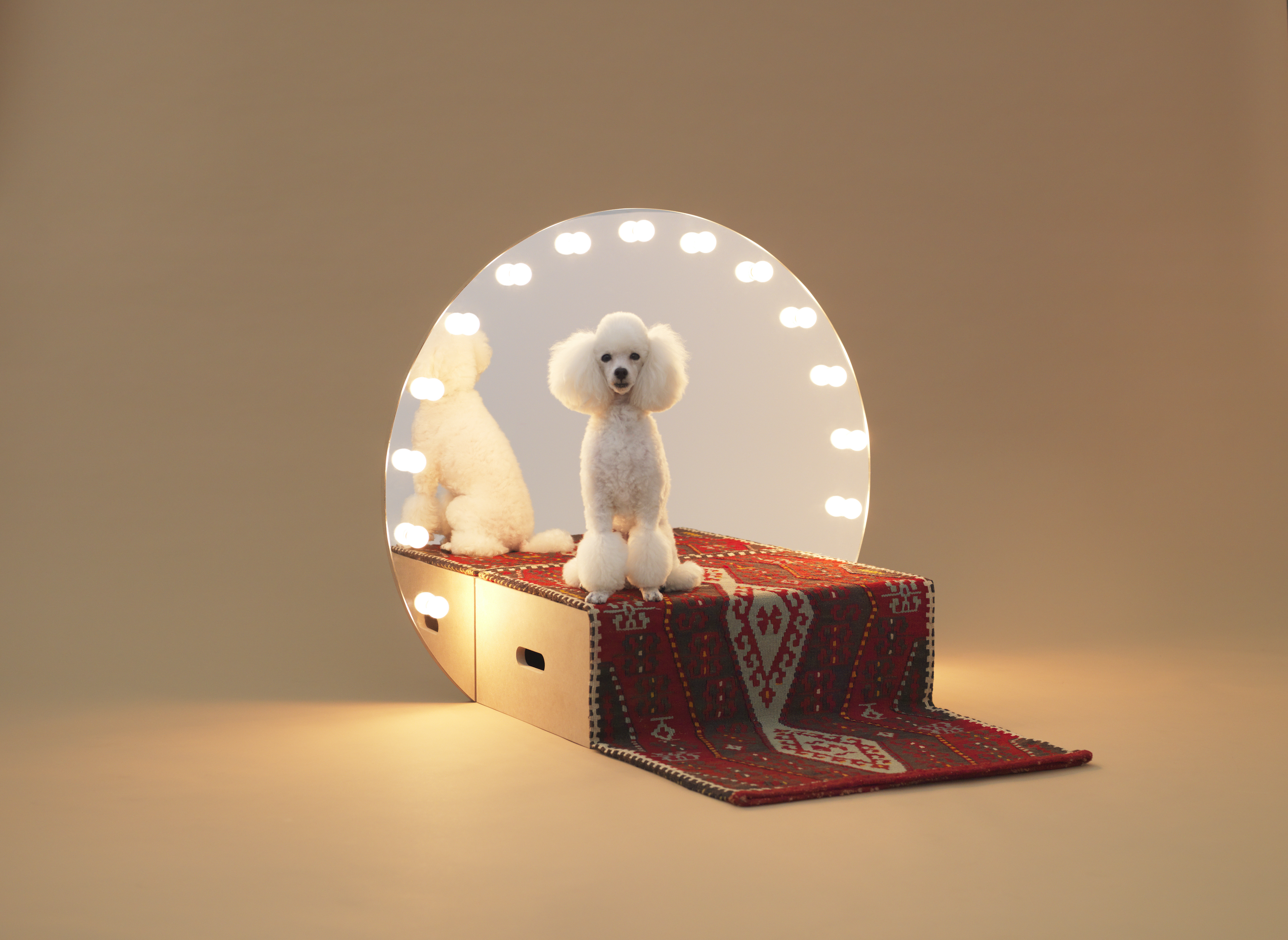
Paramount by Konstantin Grcic for toy poodle. /Japan House London
Paramount by Konstantin Grcic for toy poodle. /Japan House London
For Wright, organizing the project "proves that something can be done across borders without anybody here.
"Nobody has come from Japan," he said. "We would normally have people here to install, but everything has been done virtually. It's been art-directed virtually. All our conversations have been online from the very beginning and until installation."
Wright also explained that it is important for this to have happened at this particular time.
"People are eager to be able to engage physically with cultural activities, but of course not everybody can. So the fact that we can cross borders virtually using the internet – something which Hara Kenya, the director of this exhibition, initially thought of in any case – is highly important."
Ancient techniques, DIY approach
Khan hopes his work sparks people's imaginations about what it would be like to have a piece of architecture in their daily lives.
"What would be amazing is if someone downloaded it and made their own version of it, you know, and it was tailored to their own environment.
"The technique we've used is felting, which is this ancient technique since said to be like the first text all human beings ever made.
"So, I'm hoping that some people will download the instructions and learn how to felt, so they'll kind of take on this DIY approach and learn a new craft and make something for their best friend."
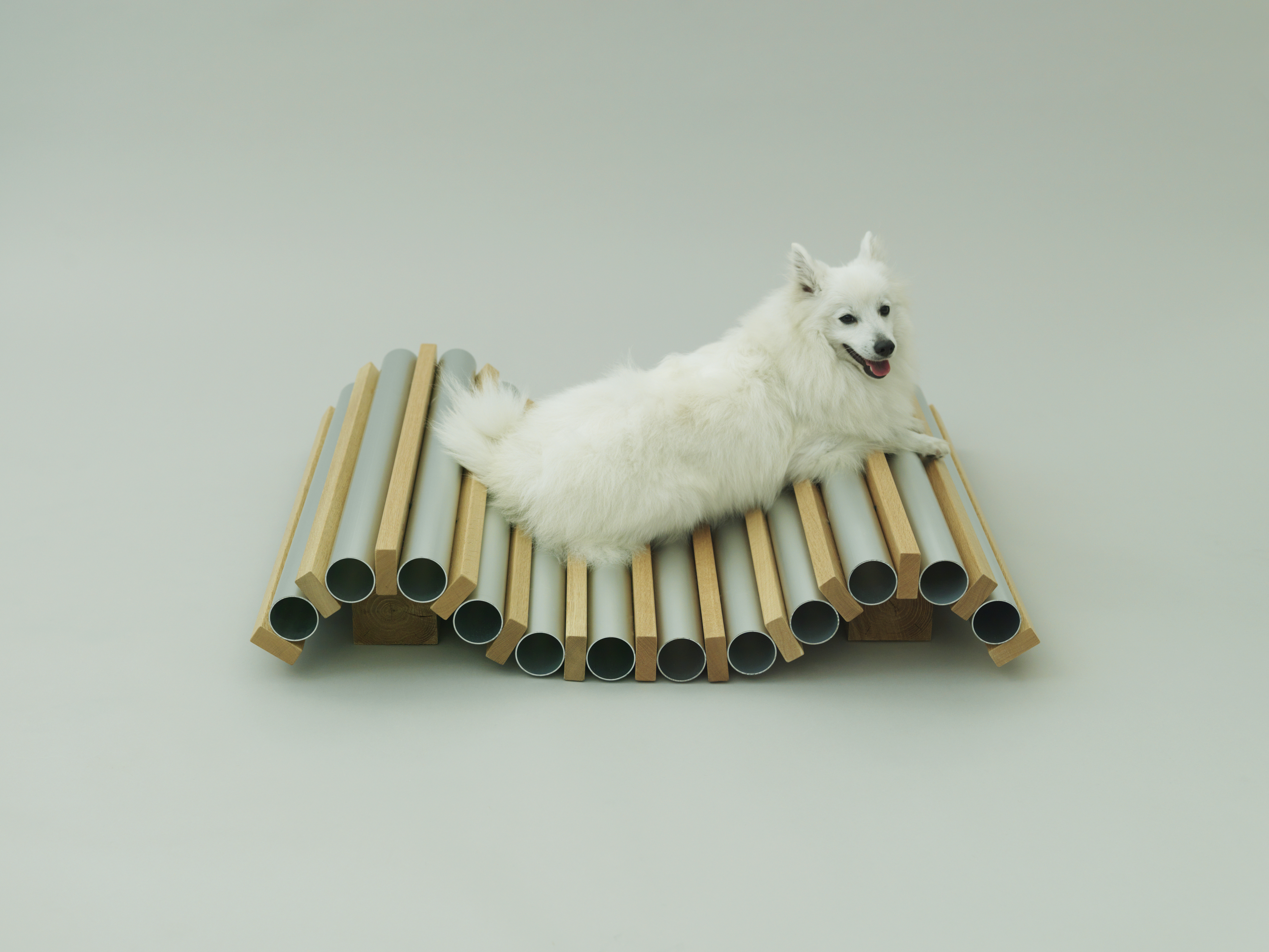
Dog Cooler by Naitō Hiroshi for spitz. /Japan House London
Dog Cooler by Naitō Hiroshi for spitz. /Japan House London
Asked whether there is potential to design architecture for other animals, Khan said that it is not only in the human nature to design worlds: all species want to create their own architecture, be it the building of nests, the digging of holes or the forming of burrows.
For Khan, the beauty of this exhibition is making something complex and intangible and compressing it into something you can understand in an instant.
"It could be for cats or for snakes or for camels," he said. "I think it's just the idea that you've switched the rules of architecture – and that makes it really interesting and fascinating to visit."

Mobile Home for Shiba by Itō Toyoo. /Japan House London
Mobile Home for Shiba by Itō Toyoo. /Japan House London
Architecture for Dogs will be at Japan House London from 19 September to 10 January. Tickets are free and can be booked in advanced here. Well-behaved and small dogs which are able to be carried are welcome at the exhibition and they are able to interact with the architecture in the hall with specially prepared exhibits.
Video editor: Natália Luz